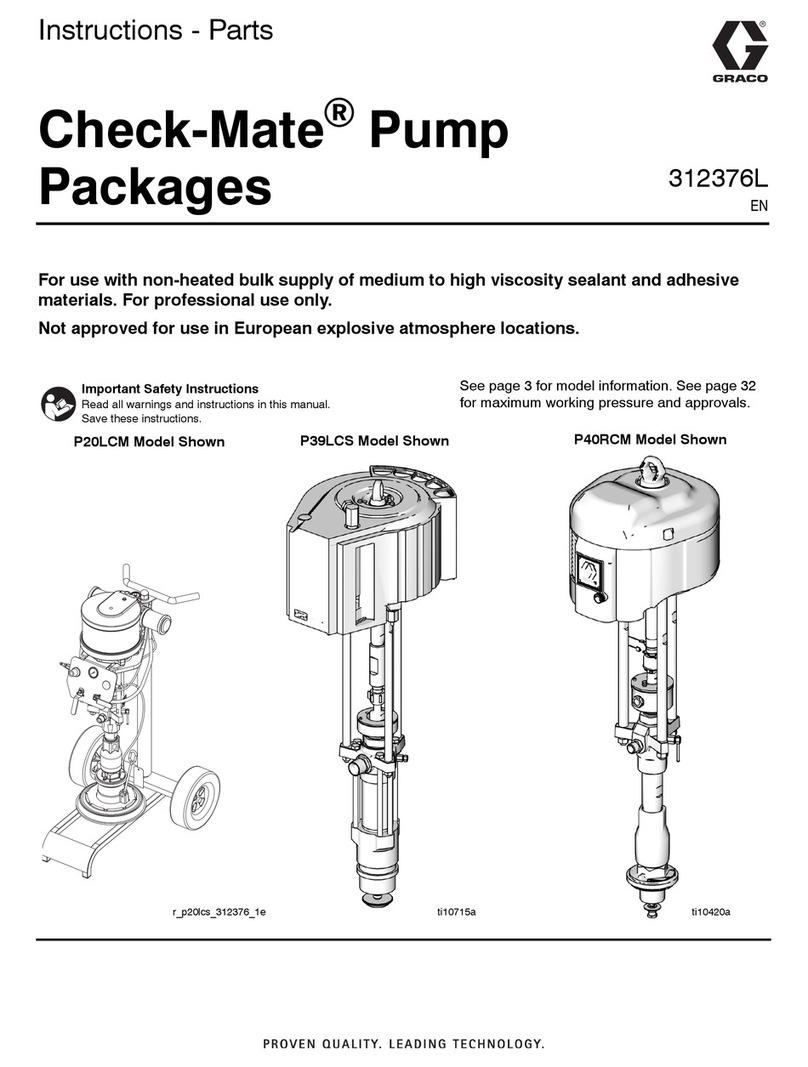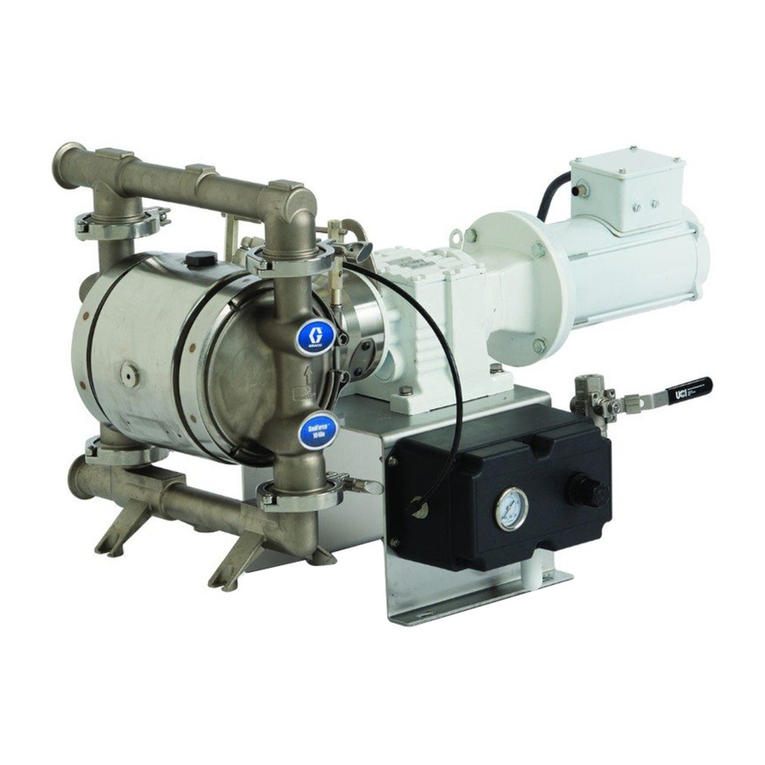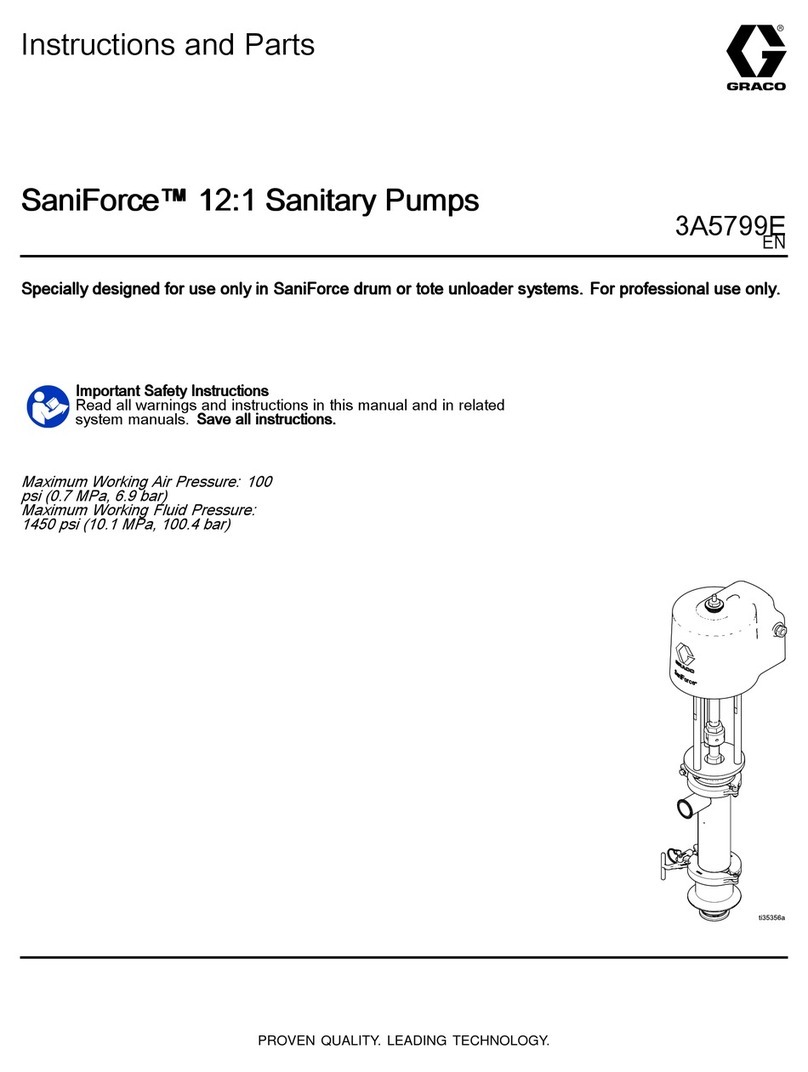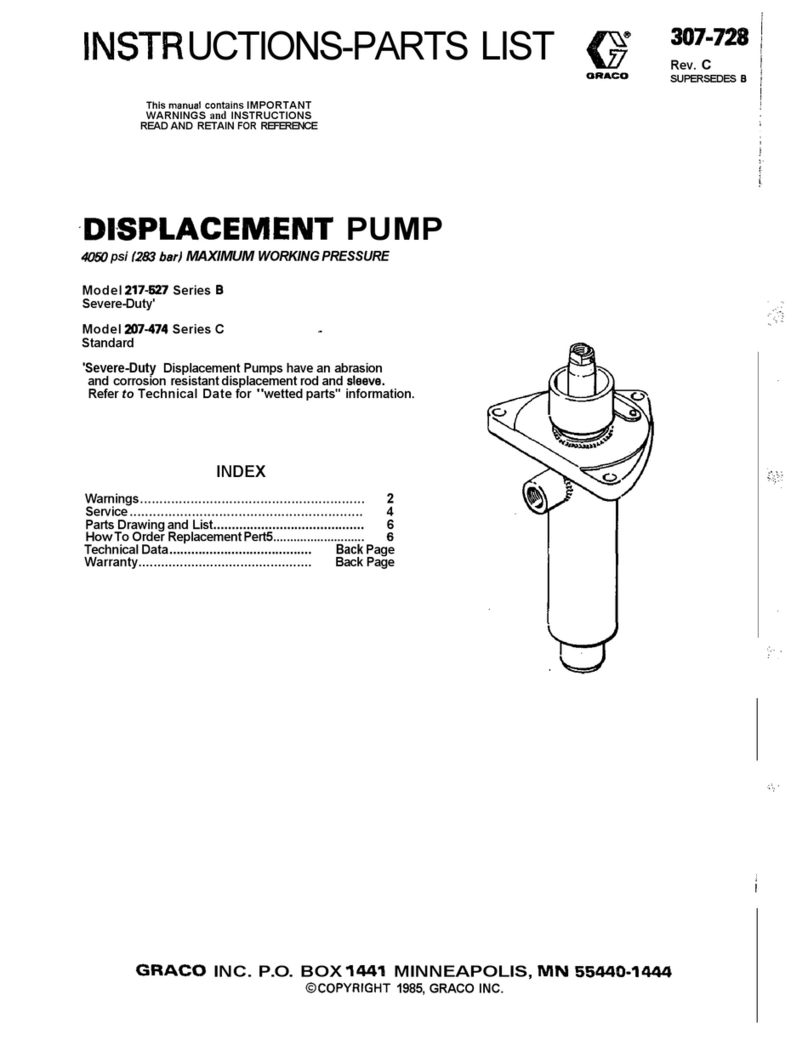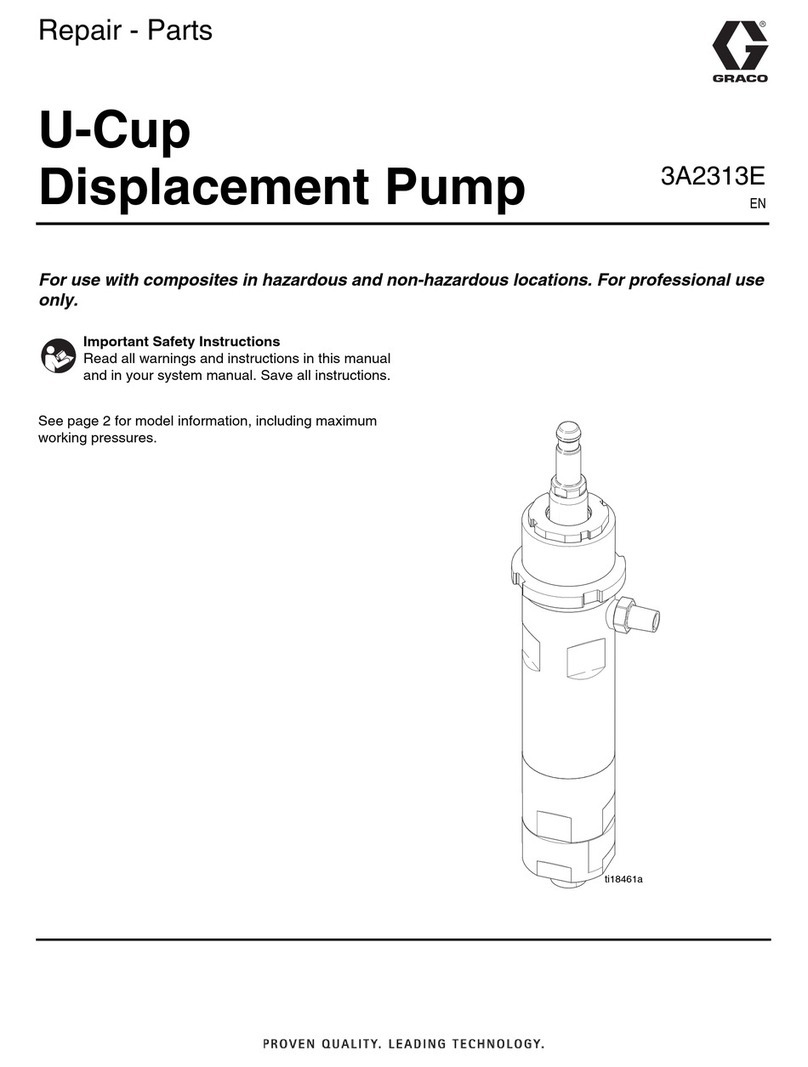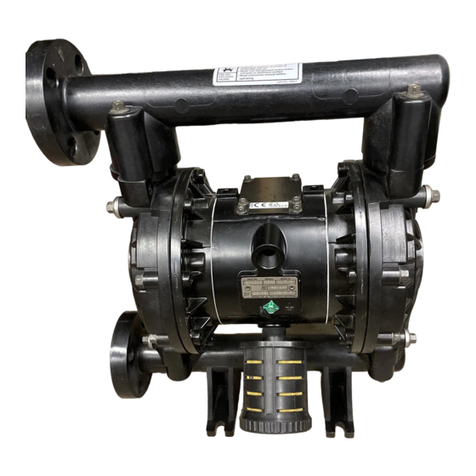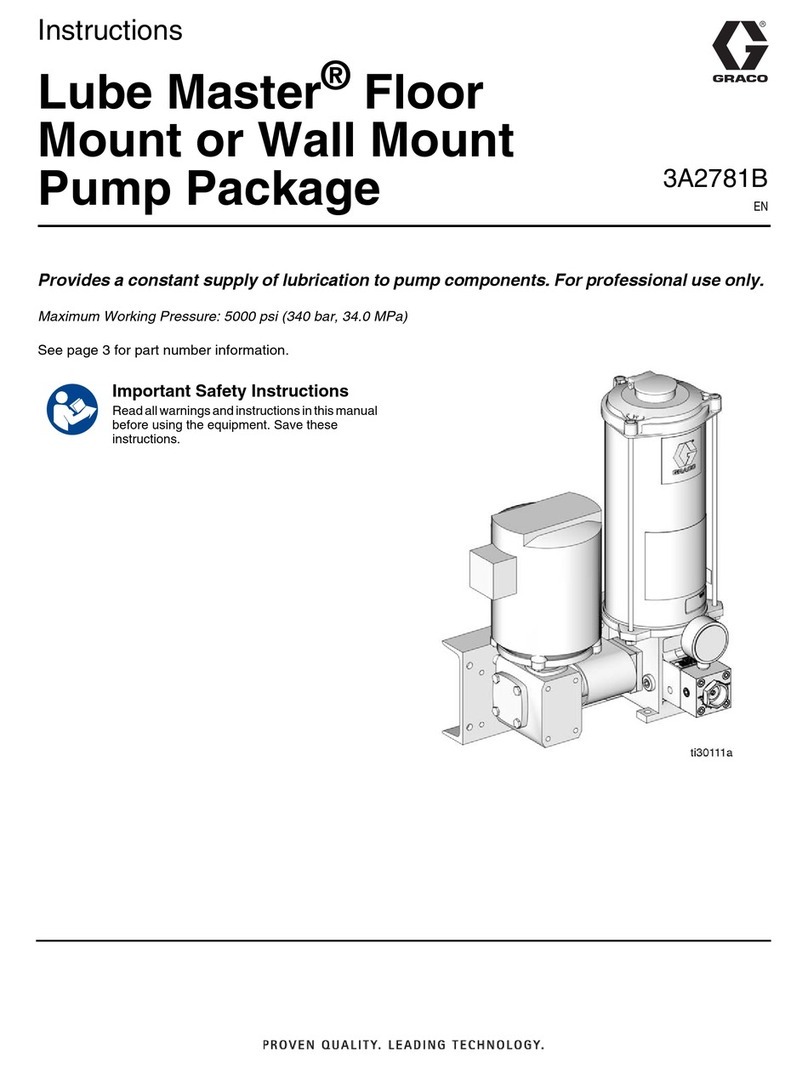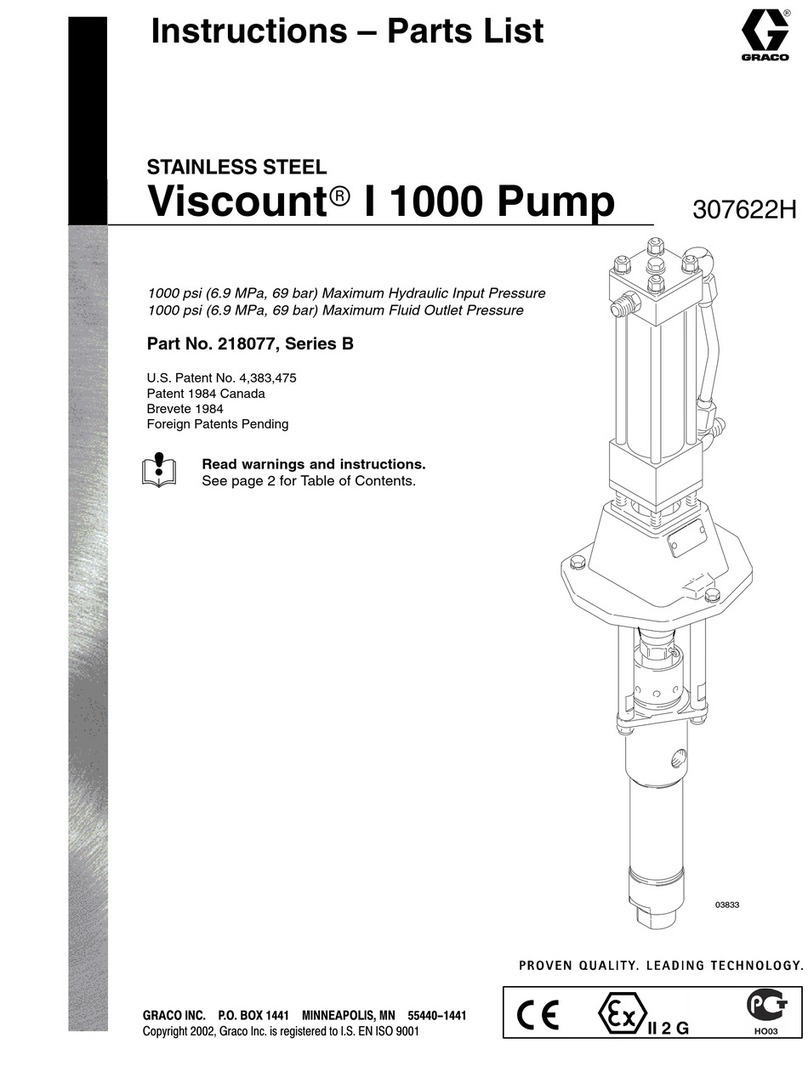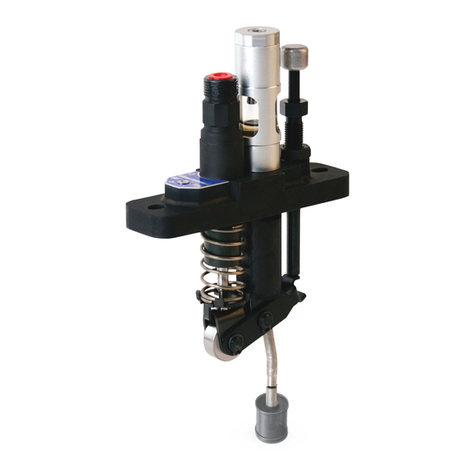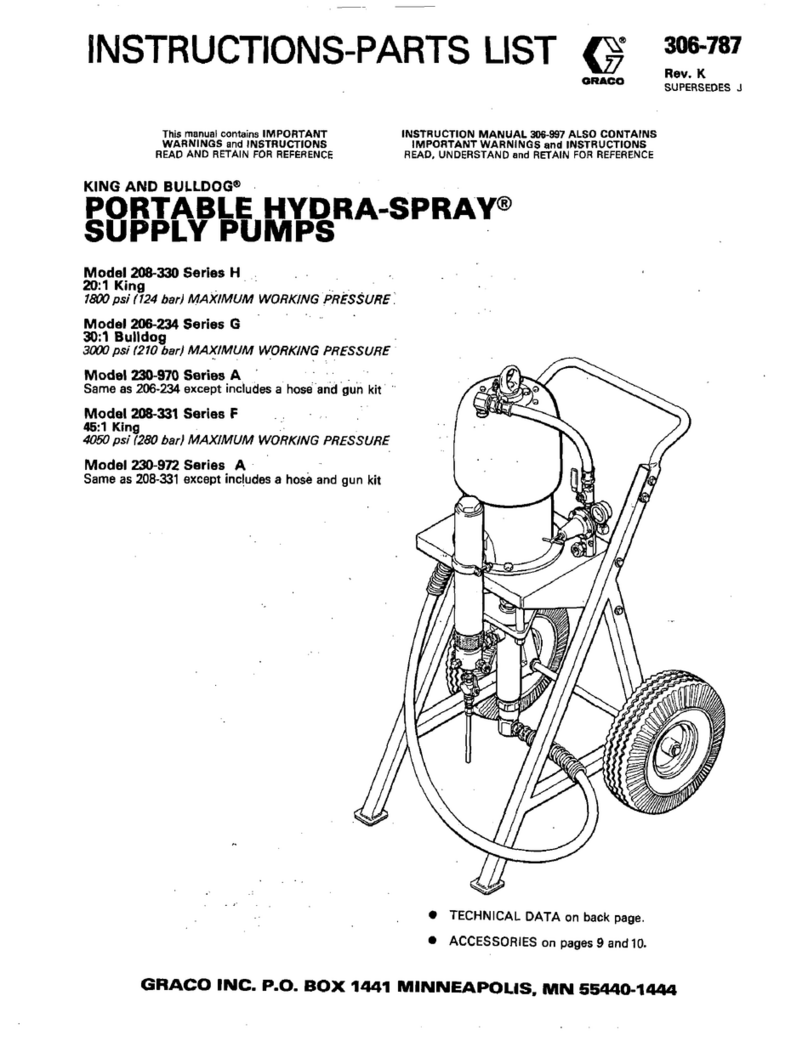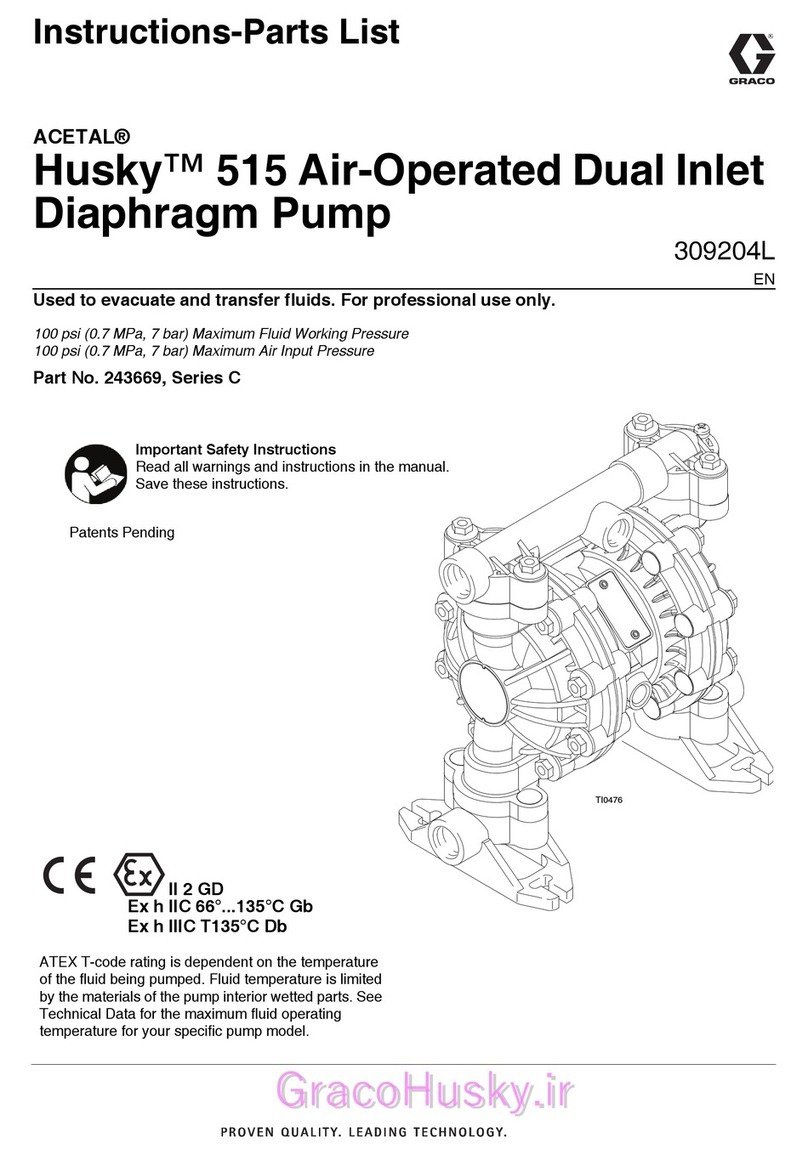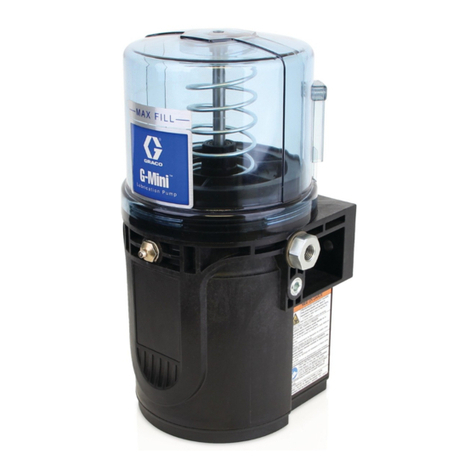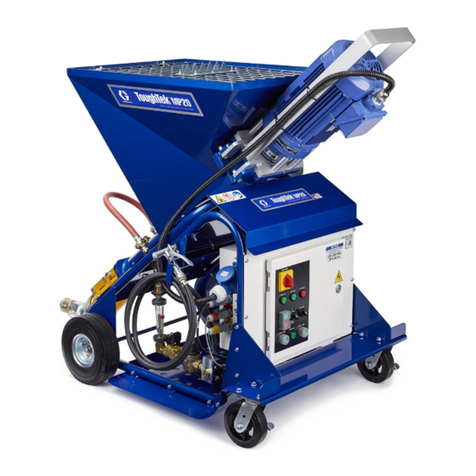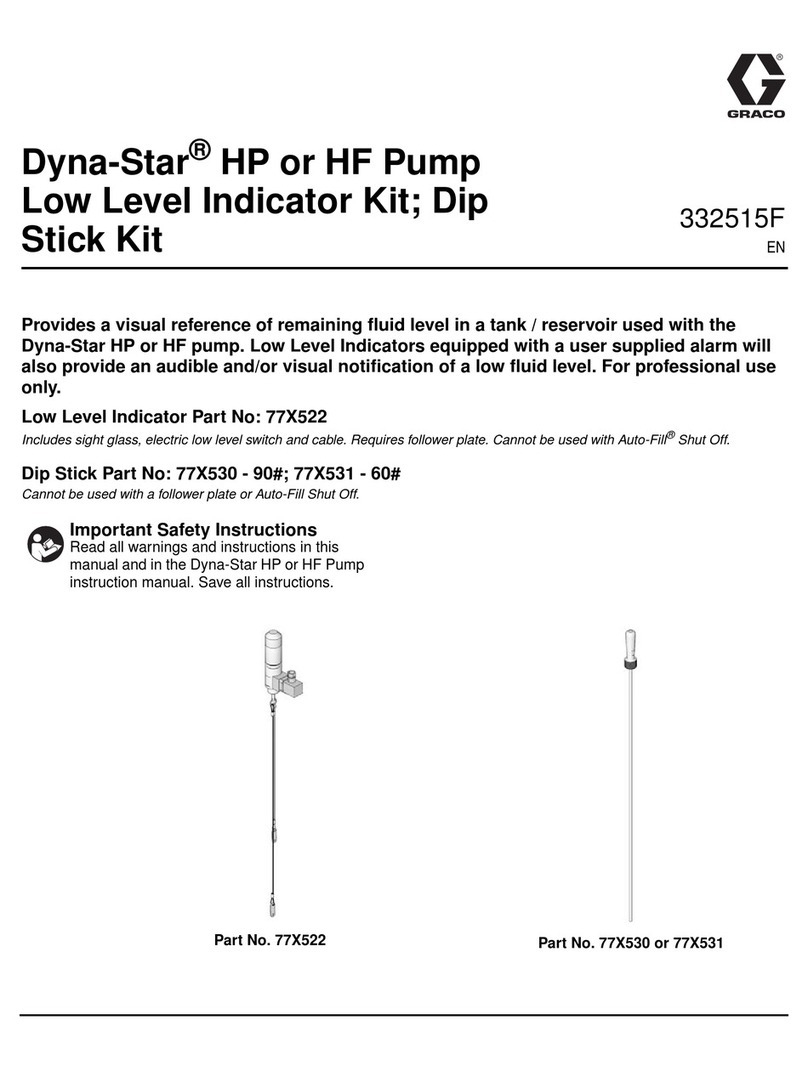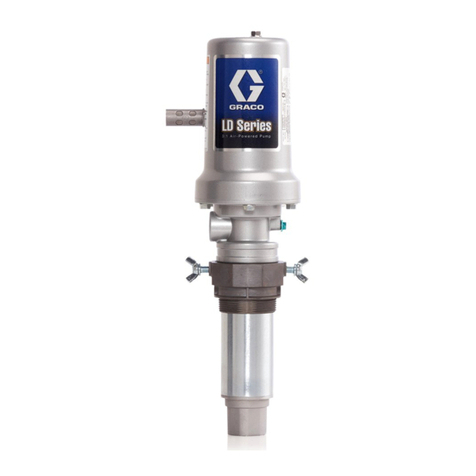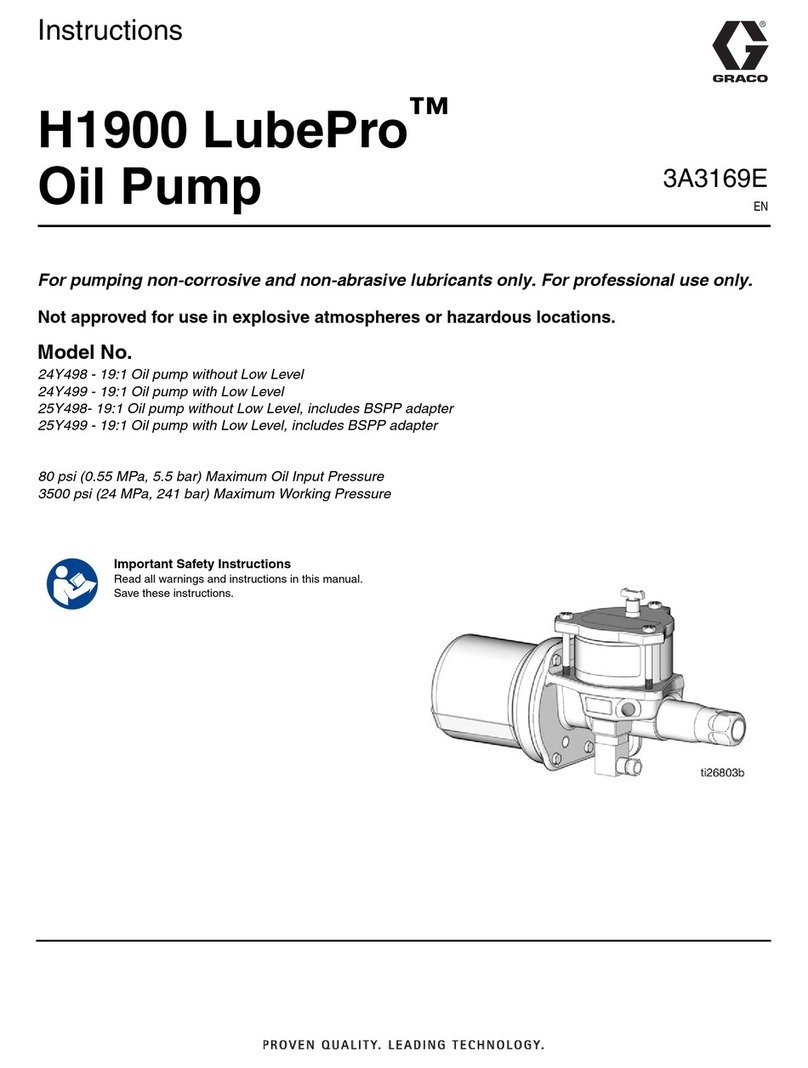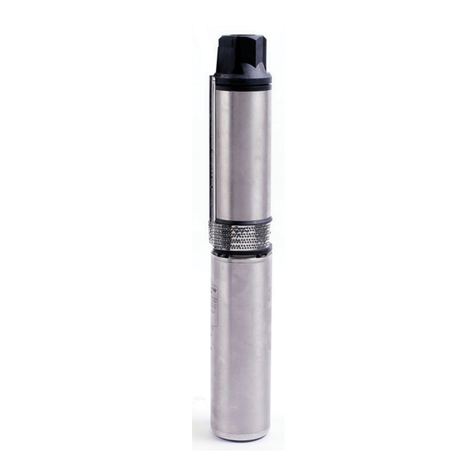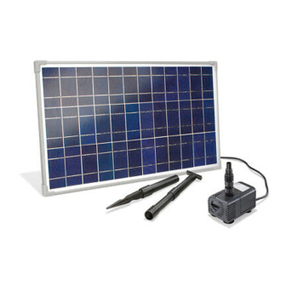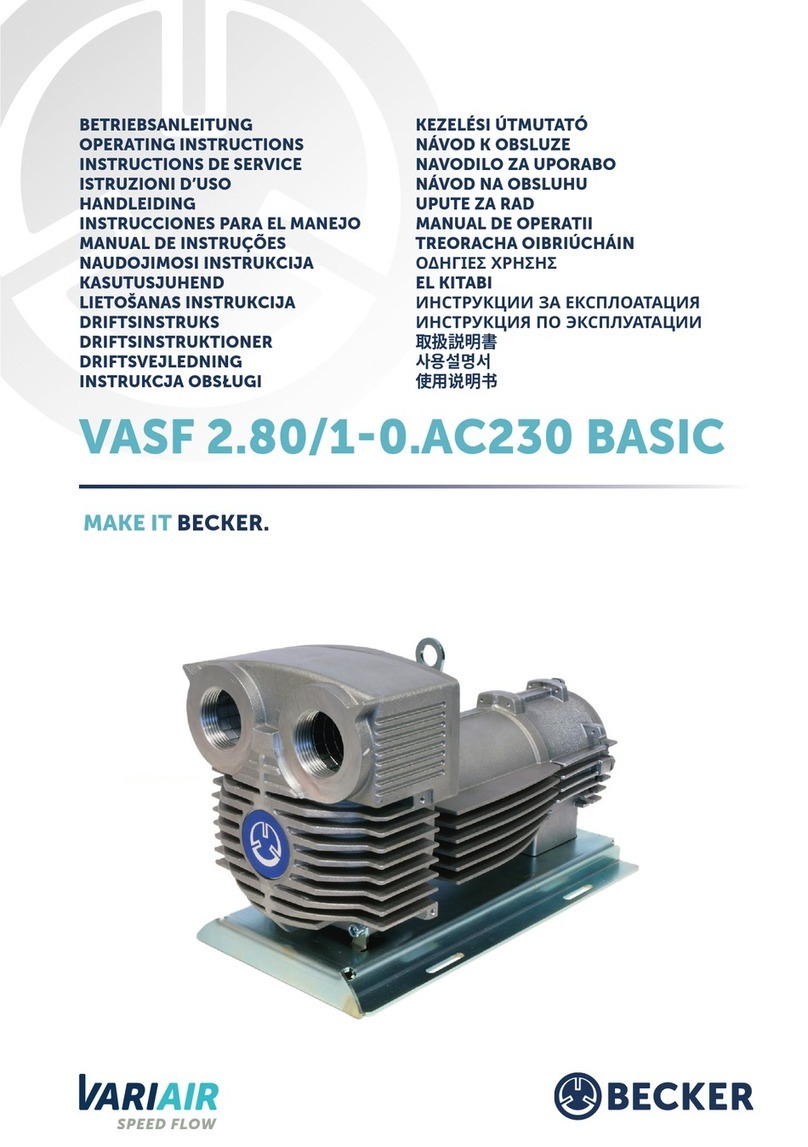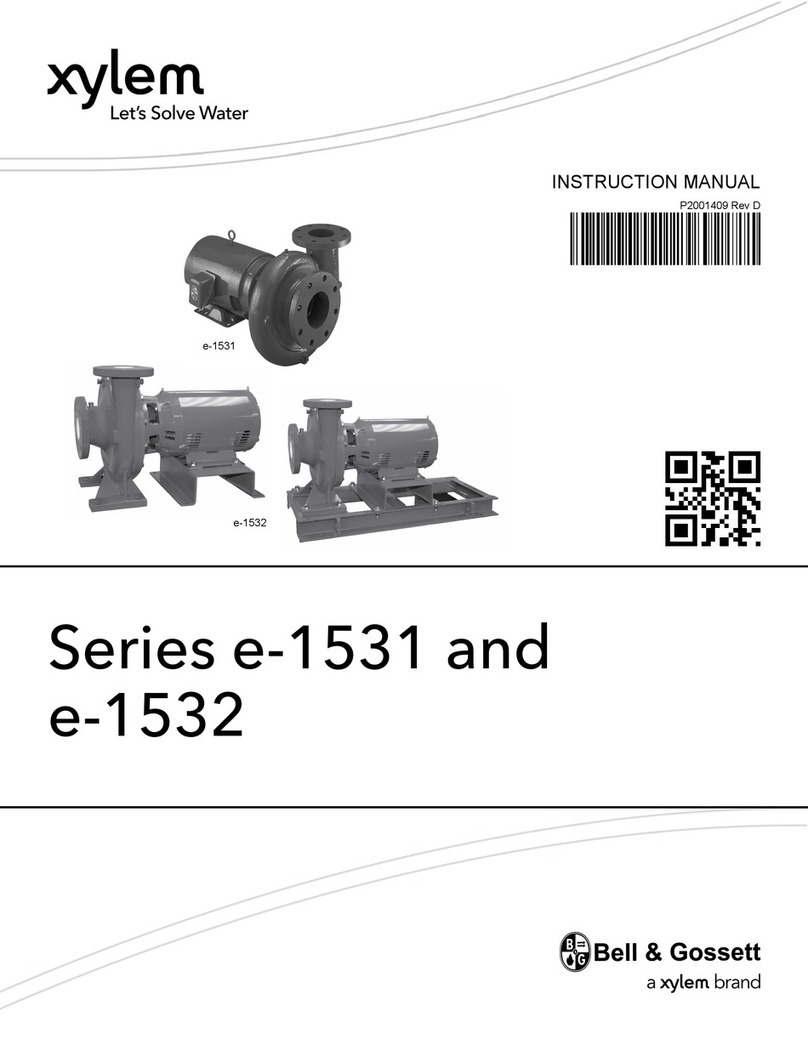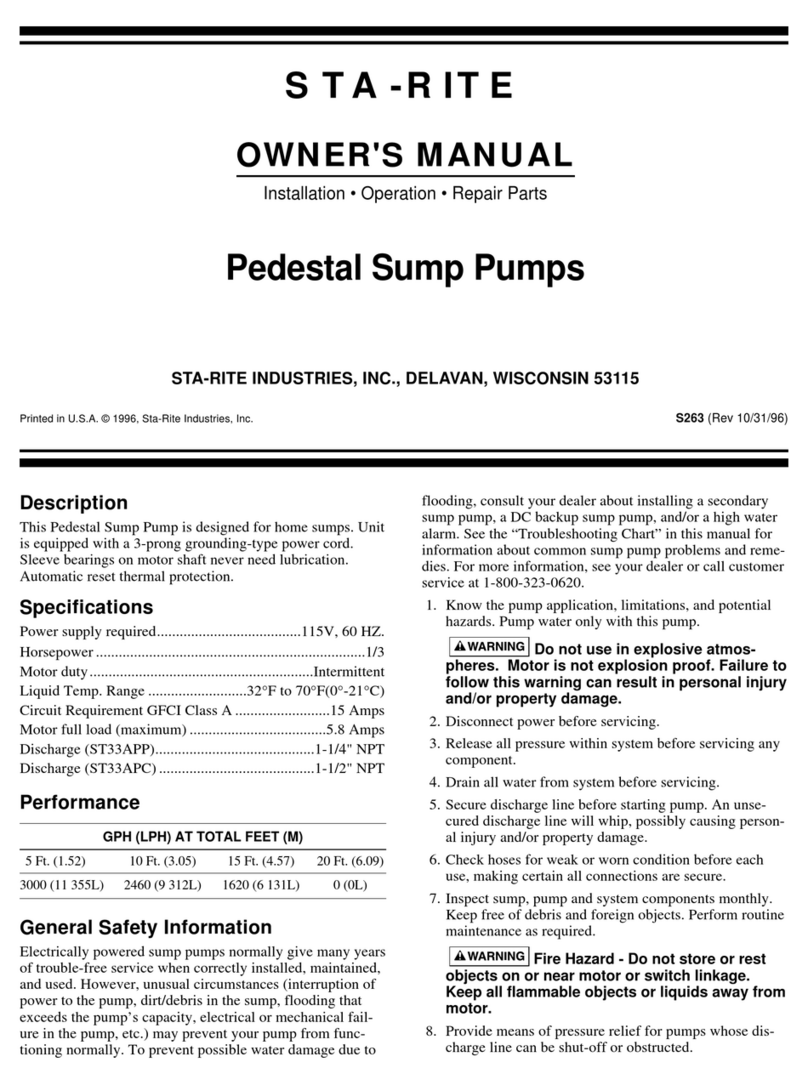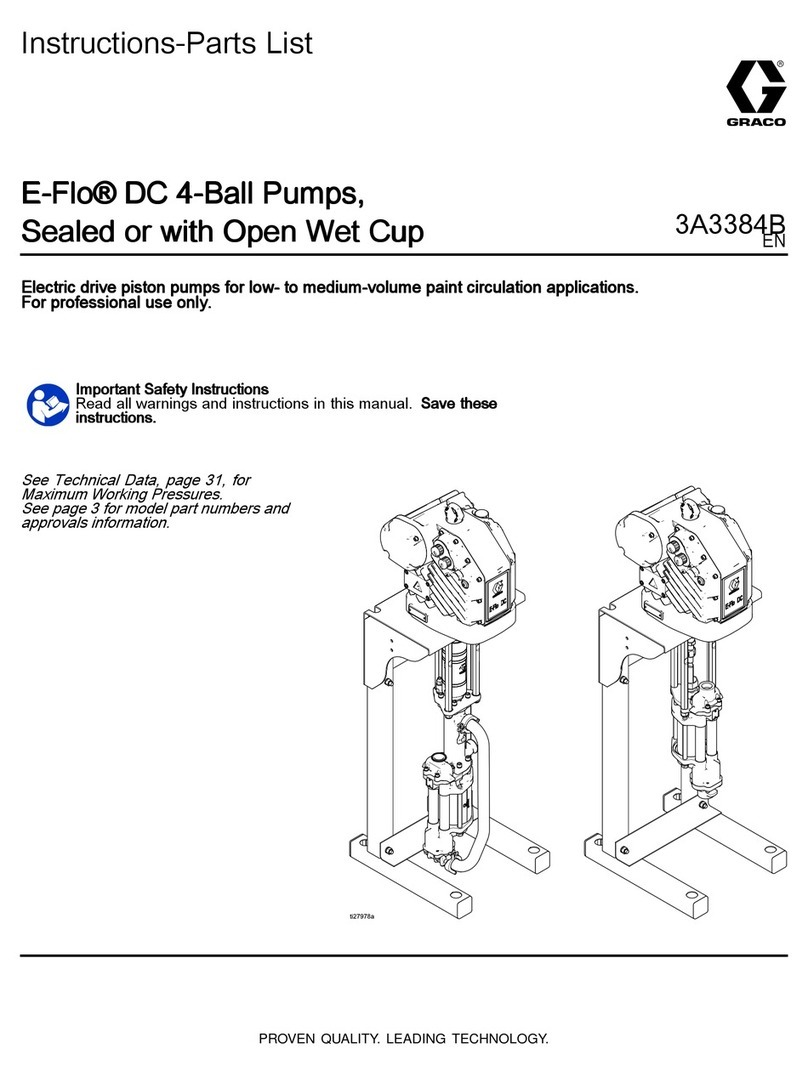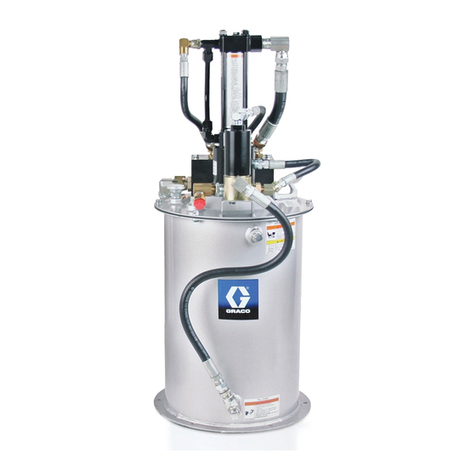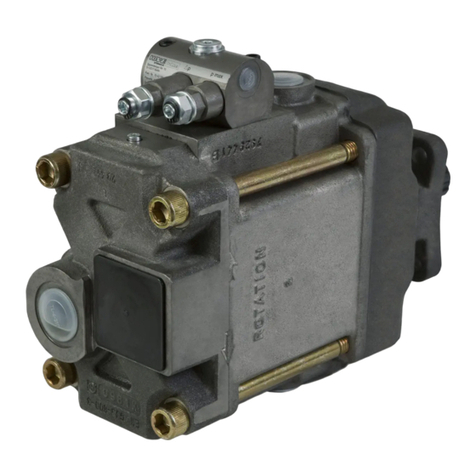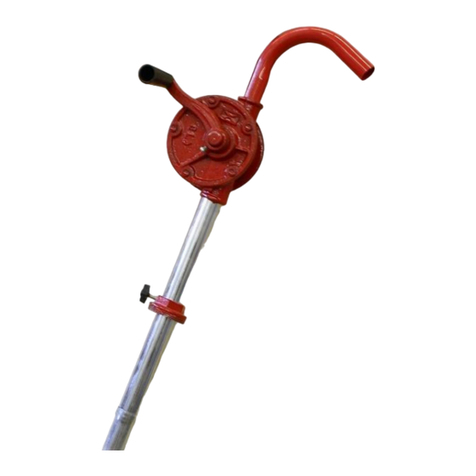
4 308-357
EQUIPMENT MISUSE HAZARD
General
Safety
Any
misuse of the spray/dispensing equipment or accesso
-
ries, such as overpressurizing, modifying parts, using incom
-
patible chemicals and fluids, or using worn or damaged parts,
can cause them to rupture and result in fluid injection, splash
-
ing in the eyes or on the skin, or other serious injury
, or fire,
explosion or property damage.
Never alter or modify any part of this equipment; doing so
could cause it to malfunction.
Check all spray/dispensing equipment regularly and repair or
replace worn or damaged parts immediately
.
Always wear protective eyewear
, gloves, clothing and respi
-
rator as recommended by the fluid and solvent manufacturer
.
System
Pressure
Never
exceed the recommended working pressure or the
maximum air inlet pressure stated on your pump or in the
T
echnical Data
on page 22.
Be sure that all spray/dispensing equipment and accessories
are rated to withstand the maximum working pressure of the
pump. Do not exceed the maximum working pressure of any
component or accessory used in the system.
Fluid
Compatibility
Be
sure that all fluids and solvents used are chemically com
-
patible with the wetted parts shown in the
T
echnical Data
on
page 22. Always read the manufacturer
’
s literature before
using fluid or solvent in the pump.
FIRE OR EXPLOSION HAZARD
Static
electricity is created by the high velocity flow of fluid
through the pump and hose. If every part of the spray/
dispensing equipment is not properly grounded, sparking
may occur
, and the system may become hazardous. Spark
-
ing may also occur when plugging in or unplugging a power
supply cord. Sparks can ignite fumes from solvents and the
fluid being sprayed/dispensed, dust particles and other flam
-
mable substances, whether you are spraying/dispensing in
-
doors or outdoors, and can cause a
fire or explosion and seri
-
ous injury and property damage. Do not plug in or unplug any
power supply cords in the spray/dispensing area when there
is any chance of igniting fumes still in the air
.
If you experience any static sparking or even a slight shock
while using this equipment,
stop spraying/dispensing im
-
mediately.
Check the entire system for proper grounding.
Do not use the system again until the problem has been iden
-
tified and corrected.
Grounding
T
o reduce the risk of static sparking, ground the pump, object
being sprayed, and all other spray/dispensing equipment
used or located in the spray/dispensing area. Check your
local electrical code for detailed grounding instructions for
your area and type of equipment. Be sure to ground all of this
spray/dispensing equipment:
1.
Pump:
use a ground wire and clamp. See Fig. 1.
2.
Air hoses:
use only grounded hoses.
3.
Fluid hoses:
use only grounded fluid hoses.
4.
Air
compressor:
follow manufacturer
’
s recommendations.
5.
Spray
gun/dispensing valve:
grounding is obtained
through connection to a properly grounded fluid hose
and pump.
6.
Fluid supply container:
according to your local code.
7.
Object being sprayed:
according to your local code.
8.
All solvent pails used when flushing,
according to your
local code. Use only metal pails, which are conductive,
placed on a grounded surface. Do not place the pail on a
nonconductive surface, such as paper or cardboard,
which interrupts the grounding continuity
.
9.
T
o maintain grounding continuity when flushing or reliev
-
ing pressure
, always hold a metal part of the spray gun/
dispensing valve firmly to the side of a grounded
metal
pail, then trigger the gun/valve.
Fig.
1
To ground the air motor and pump:
Loosen
the grounding lug locknut (W) and washer (X).
Insert
one end of a 1.5 mm
(12 ga) minimum ground
wire
(Y)
into the slot in lug (Z) and tighten the locknut securely
.
See Fig. 1. Connect the other end of the wire to a true
earth ground. Order Part No. 222–01
1 Ground Wire and
Clamp.
W
X
Y
Z
Flushing
Safety
Before
flushing, be sure the entire system and flushing pails
are properly grounded. Refer to
Grounding
, at left. Follow
the
Pressure Relief Procedure
on page 3, and remove the
tip/nozzle from the gun/valve. Always use the lowest possible
fluid pressure, and maintain firm metal-to-metal contact be
-
tween the gun/valve and the pail during flushing to reduce the
risk of fluid injection injury
, static sparking and splashing.

